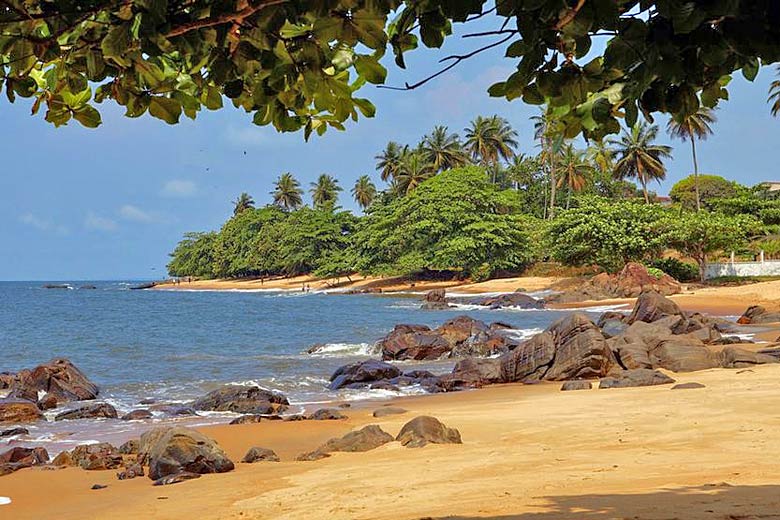- Save up to 17% on Hilton hotels with Best Available Rate
- Become a Hilton Honors member for free
- Book hotels & resorts across worldwide destinations
Lebanon weather by month
Check out the Lebanon weather averages by month. Compare detailed monthly climate statistics including temperature, rainfall and sunshine figures.
| Jan | Feb | Mar | Apr | May | Jun | Jul | Aug | Sep | Oct | Nov | Dec | |
|---|---|---|---|---|---|---|---|---|---|---|---|---|
| Maximum daytime temperature °F |  59 59 |
 61 61 |
 64 64 |
 70 70 |
 77 77 |
 81 81 |
 86 86 |
 86 86 |
 84 84 |
 79 79 |
 70 70 |
 61 61 |
| Hours of sunshine (daily) | ||||||||||||
| Days with some rainfall |  15 15 |
 14 14 |
 11 11 |
 6 6 |
 3 3 |
 1 1 |
 0 0 |
 1 1 |
 1 1 |
 5 5 |
 8 8 |
 13 13 |
| Sea temperature °F |  64 64 |
 63 63 |
 63 63 |
 64 64 |
 70 70 |
 77 77 |
 81 81 |
 82 82 |
 82 82 |
 79 79 |
 73 73 |
 68 68 |
More about the Lebanon
Lebanon by month
Jan Feb Mar Apr May Jun Jul Aug Sep Oct Nov Dec
Recommended for the Lebanon
The climate guide for Lebanon (Beirut) shows long term monthly weather averages processed from data supplied by CRU (University of East Anglia), the Met Office & the Netherlands Meteorological Institute. Find out more about our data sources.
Top Lebanon destinations
Below are average maximum temperatures at popular countries, regions and places in the Lebanon for next month - August. Select a destination to see the climate guide for all months of the year.
All Lebanon destinations
Metric (°C) | Imperial (°F)
Lebanon climate overview
This small Mediterranean republic gained its independence from France during the Second World War but has since endured a civil war and intermittent conflicts with Israel. Despite this, Lebanon has become increasingly stable over the last 10 years and is slowly regaining its status as an Arab tourist destination.
The capital, Beirut, lies on the narrow coastal strip along the Mediterranean. It was badly damaged during the civil war and remains poor and overcrowded with polluted beaches.
Two mountain ranges run north-south along the length of the country. The Mount Lebanon Range is particularly beautiful with narrow gorges, lush green valleys and waterfalls. There are also modern ski resorts around Bcharre, set in spectacular winter scenery.
Between Lebanon's two mountain ranges lies the Bekaa Valley; a fertile and heavily cultivated region growing mainly wheat and citrus fruit. Within this valley lies the town of Baalbeck, which contains ancient Roman ruins; the Baalbeck acropolis is one of the largest in the world.
The sub-tropical climate has a hot and dry summer, and remains virtually cloud-free. The Mediterranean coast can become uncomfortably humid while mountain regions escape the worst of the summer heat. Temperatures are comfortable during the winter in the lowlands and cold in the mountains.
Frequent winter storms whistle in from the Mediterranean and bring plenty of cloud and rain during winter and autumn months with the heaviest rainfall from December to February. This falls as snow over the mountains, which can become very windy with high wind chill.
Compare Lebanon with the UK
Below the Lebanon chart shows average maximum daytime temperature for Lebanon (Beirut) and the UK (London).
Maximum daytime temperature (°F)
Metric (°C) | Imperial (°F)
Compare more Lebanon weather >>
Be inspired
Get your weekly fix of holiday inspiration from some of the world's best travel writers plus save on your next trip with the latest exclusive offers
We promise not to share your details
Related posts
Popular travel offers
Explore holidays in the sun for less
- Beach holidays
- Family holidays
- City breaks
- Summer holidays
- Winter sun holidays
- Holiday offers
- Top travel brands
- Airlines & flights
- Discount hotels
- Airport parking deals
- TUI
- Jet2holidays
- easyJet holidays
- Love Holidays
- January sales
Airport parking
- Manchester Airport
- Stansted Airport
- Bristol Airport
- Luton Airport
- Birmingham Airport
- Edinburgh Airport
- Gatwick Airport
- Glasgow Airport
- Newcastle Airport
Airport lounges
- Manchester Airport
- Birmingham Airport
- Bristol Airport
- Edinburgh Airport
- Glasgow Airport
- Heathrow Airport
- Newcastle Airport
- Stansted Airport
- Gatwick Airport
























